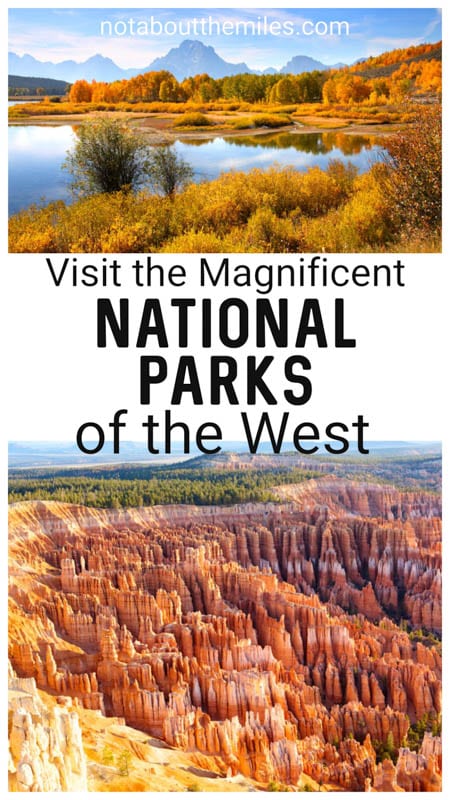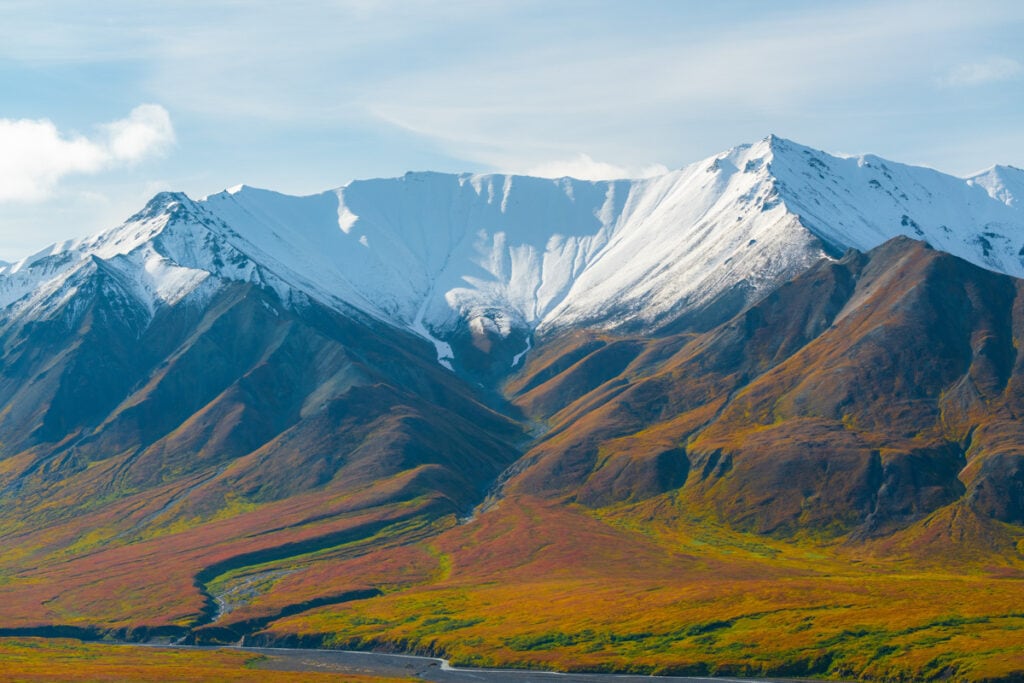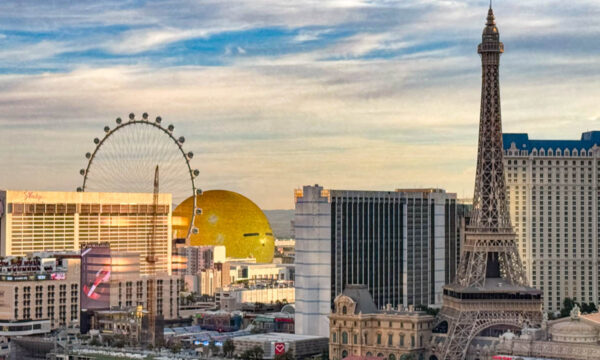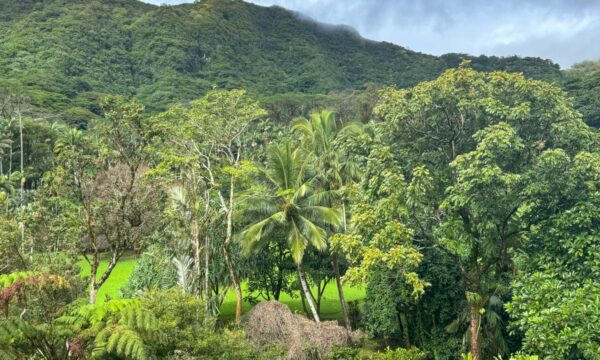The great national parks of the west call to the adventurer in each of us, inviting us to explore their untamed magnificent beauty.
From the granite cliffs of Yosemite and the bubbling pools of Yellowstone to the arid vastness of Death Valley and the volcanic heights of Haleakala, the western US and West Coast parks offer diverse landscapes, each one unique in its own spectacular way.
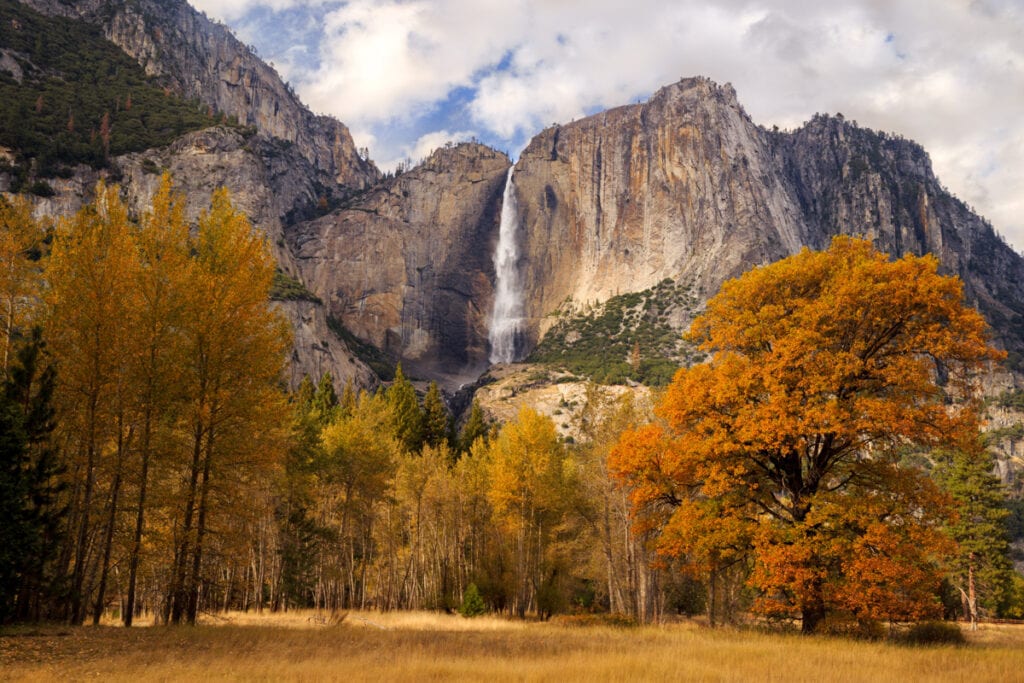
Some links on this page may be affiliate links. If you click an affiliate link and make a purchase, we may receive a small commission, at no extra cost to you. For more details, refer to our disclosure.
The national parks of the western US have been favored outdoor vacation spots for a long time now, and they have become even more popular in recent times.
We’ve done many trips to the great national parks of the west, but for this article, we’ve rounded up the best national parks in the west for you with the help of colleagues in the travel blogging community.
Every single park on this list is worthy of being placed on your bucket list!
Best US National Parks in the West
Go west, adventure seekers! The national parks in the west make for fabulous western US road trips, and often you can combine them with visit-worthy state parks or other natural wonders.
But they make for excellent West Coast getaways on their own too, whether you are looking for an outdoor family vacation, a romantic couples escape into nature, or a peaceful solo retreat.
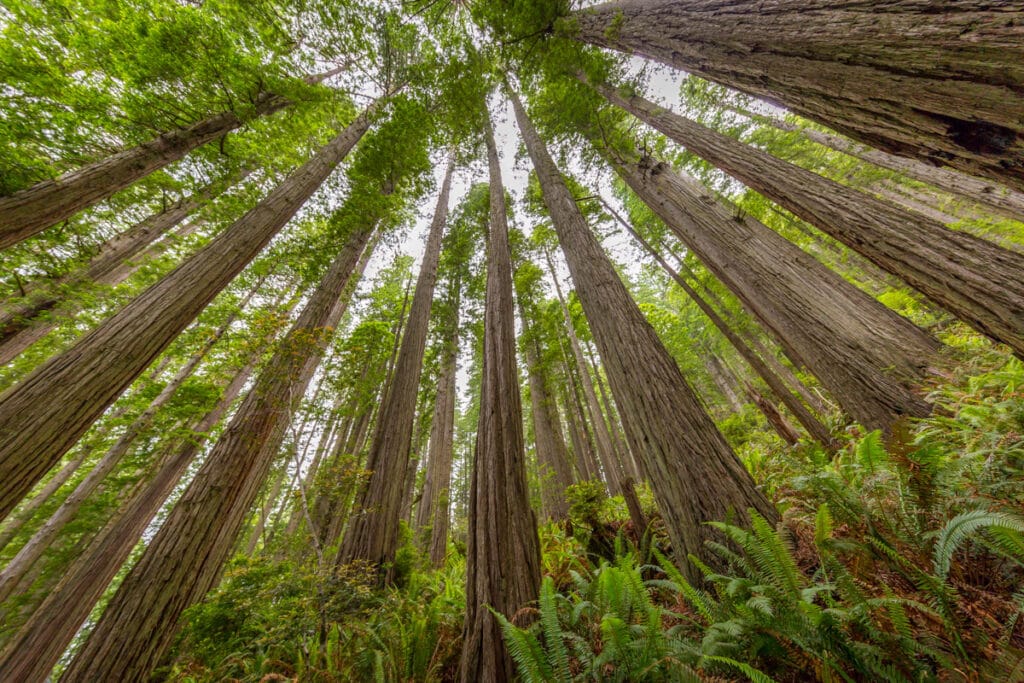
And there are US national parks in the west for every season: you can chase wildflowers and waterfalls in the spring, admire leaf colors in the fall, frolic in the snow or savor the desert sun in the winter, and enjoy beaches, lakes, forests, and mountains in the summer.
If you are a wildlife enthusiast or an avid birder, the West Coast and western US national parks offer loads of opportunities for wildlife viewing and birdwatching.
From bison and moose to raptors and desert tortoises, you may see many species as you explore these epic parks.
Planning to visit more than one national park in the next 12 months? Consider buying the America the Beautiful National Parks Pass!
Valid at over 2,000 federal recreation sites all across the USA, the pass covers entrance, standard amenity fees, and day use fees for a driver and passengers in a personal vehicle at areas that charge per vehicle, and for up to four adults at sites that charge per person. Children ages 15 or under are free.
The pass is valid for 12 months from the month of purchase.
And now, let’s get started discovering the best national parks in the west to put on your outdoors getaway itinerary!
1. Yellowstone National Park, Wyoming
Yellowstone National Park is one of the most legendary national parks in the west, and for good reason.
It was the first national park established in the United States, and many people believe that it is the first national park in the world. Its stunning natural features make it a must-visit destination.
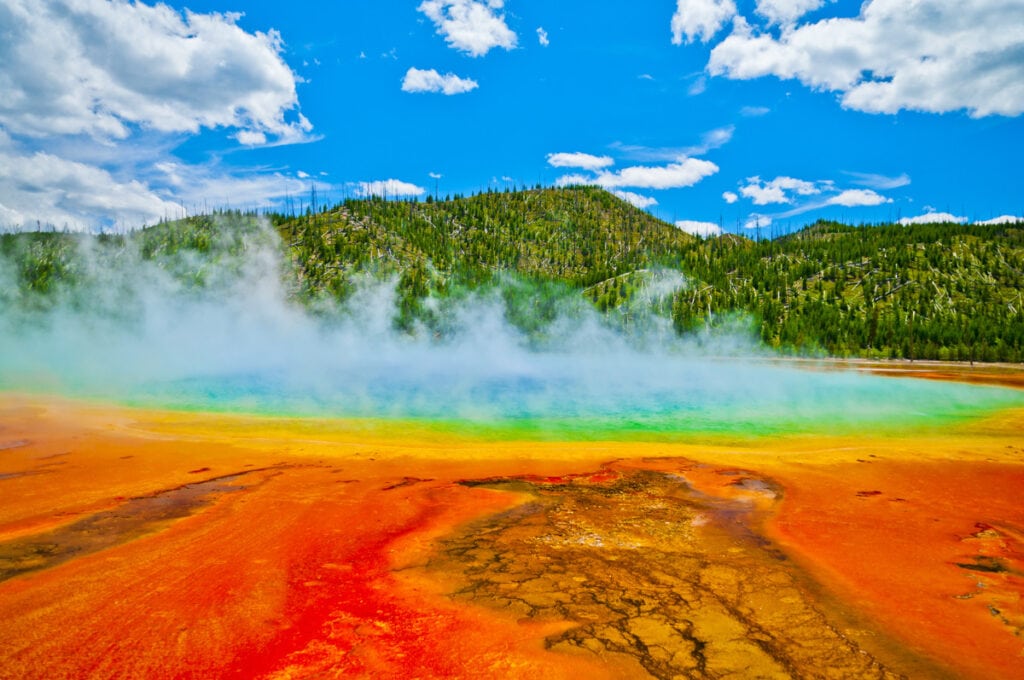
One of the best things to do in Yellowstone is to observe wildlife like bear and bison. Just keep in mind that the animals are wild and always stay at a safe distance.
Yellowstone is full of geothermal features because it is located in the basin of a dormant supervolcano. The most famous hydrothermal feature in the park is Old Faithful, a geyser that erupts at predictable times every day.
But there are also stinky bubbling mud pots and the Grand Prismatic Hot Spring. The wild colors in the hot spring are actually made by heat-loving microorganisms. Finally, don’t miss the jaw-dropping Grand Canyon of the Yellowstone.
If you want to see everything Yellowstone has to offer, you should spend two full days there and either spend the night at a campground or in one of the hotels in Yellowstone.
That way you can get up early and see some of the more famous attractions while avoiding the crowds. However, Yellowstone is also enjoyable as an all-day trip from Jackson in Wyoming.
The best time of year to visit for the weather is the summer: in fact, Yellowstone is one of the best US national parks to visit in summer.
But if you want to avoid crowds, spring and fall would be preferable. And you can visit in winter to find a winter wonderland, still and peaceful: it’s so magical that Yellowstone features on our list of the best national parks to visit in January!
Yellowstone and Grand Teton National Parks make for one of the best western US road trips you can do!
Contributed by Stella Jane from Around the World in 24 Hours
2. Death Valley National Park, California
One of the best West Coast national parks also happens to be one of the biggest.
Death Valley National Park is over 5,000 square miles large and features everything from snow-capped mountains to the lowest, hottest, and driest place in America.
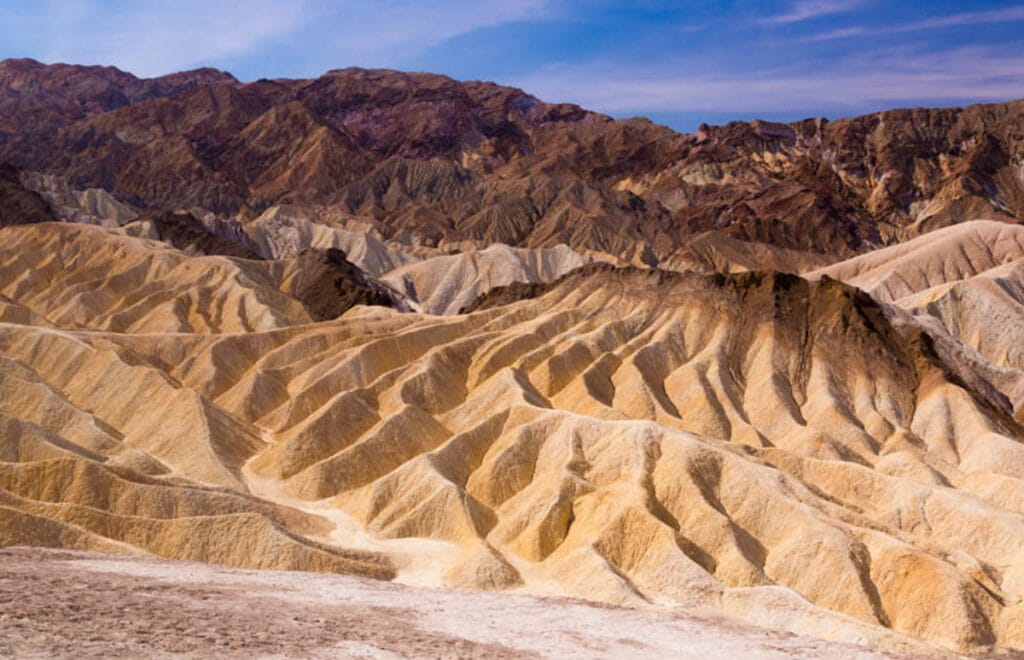
There are plenty of things to do in Death Valley National Park.
Most of the activities require quite a bit of driving, and there are limited facilities in the park so be sure to bring a vehicle and all of your water, snacks, and supplies.
Dante’s View gives you sweeping vistas of Badwater Basin. At Badwater Basin, you’ll find the lowest point in America, 282 feet below sea level! There are salt flats here and the landscape feels like you’re on the moon.
Zabriskie Point at sunrise is one of the best experiences in Death Valley National Park!
Also be sure to check out the Mesquite Flat Sand Dunes, Racetrack Playa, and Artist’s Drive, to truly get a sense of the diverse landscapes in this park.
Most people opt to spend at least two days in the park. In part because it’s so big, but also because you can experience the magic of a Dark Sky Territory.
Death Valley features amazing views of the Milky Way, so spend at least one night to experience truly dark skies untainted by light pollution.
You can certainly visit Death Valley as a day trip and still see many of the highlights so don’t miss out if you’re short on time! Death Valley is one of the most popular day trips from Vegas.
Overall, Death Valley National Park has quite a bit of life and diversity for such a desolate-sounding park. Get ready to explore the best of Death Valley with a trip during the winter or spring months.
Winter is the coolest, with temperatures still feeling pretty balmy during the day. Spring is the time for wildflower blooms (but expect more visitors).
Summer is not advisable due to the soaring temperatures (120 degree days are not uncommon). Fall is a pleasant, yet still very hot, time to visit.
Contributed by Meg Atteberry from Fox in the Forest
Looking for a rental car for your national park trip? Compare prices, find your car, and book on Discover Cars! They search numerous car rental agencies, from brand to budget, to offer you the best choices for your trip.
3. Denali National Park, Alaska
Denali, in Alaska, is one of the most stunning national parks in the western United States.
It‘s home to Mount Denali, the highest mountain in North America. Mt. Denali is enormous, and it can be seen from as far as Anchorage (if the weather is good).
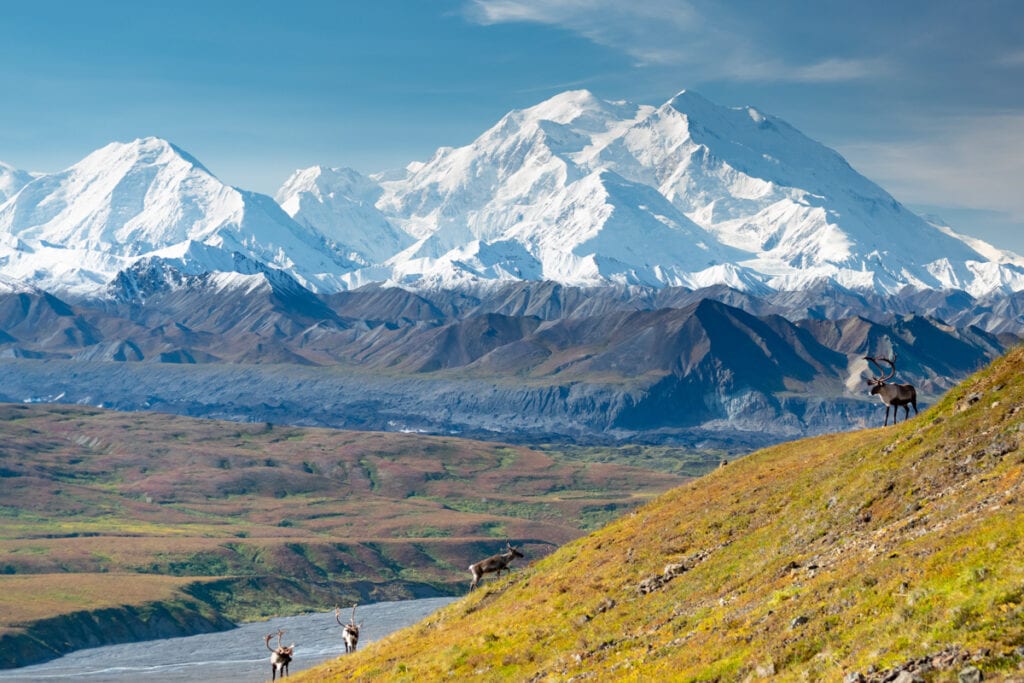
You shouldn’t miss a bus trip to Denali National Park. There is no other way to get there, other than via sightseeing flights.
There are several alternatives and tours from which you can choose (the deeper you go into the park, the more wildlife you see). One of the most beautiful views of Mt. Denali is from the Eielson Visitor Center.
If you have more time, head out into the wild for a few days with a “camper bus.” Backpacking in Denali National Park is a very unique experience.
If you decide to head off on this exciting trip, start at Denali Wilderness Access Center to book the bus and get your camping permit at the Ranger station.
To learn a bit more about huskies, visit the husky demonstration. The program takes about 30 minutes and it’s free.
The best time to visit Denali National Park is in the summer season, approximately from June to August.
It’s good to plan at least several days for your visit (especially if you plan some hiking). If you need more information about Alaska, read this Alaska travel guide.
Contributed by Adriana from Czech the World
4. Haleakala National Park, Maui, Hawaii
Located on the island of Maui, Haleakala National Park offers the opportunity to experience an otherworldly volcanic landscape up close. Visiting Haleakala National Park is one of the best things to do in Maui!
While sunrises and sunsets in the park are legendary, the stargazing is wonderful as well. Witnessing an epic sunrise (or sunset) on Haleakala is definitely an item for your Hawaii bucket list.
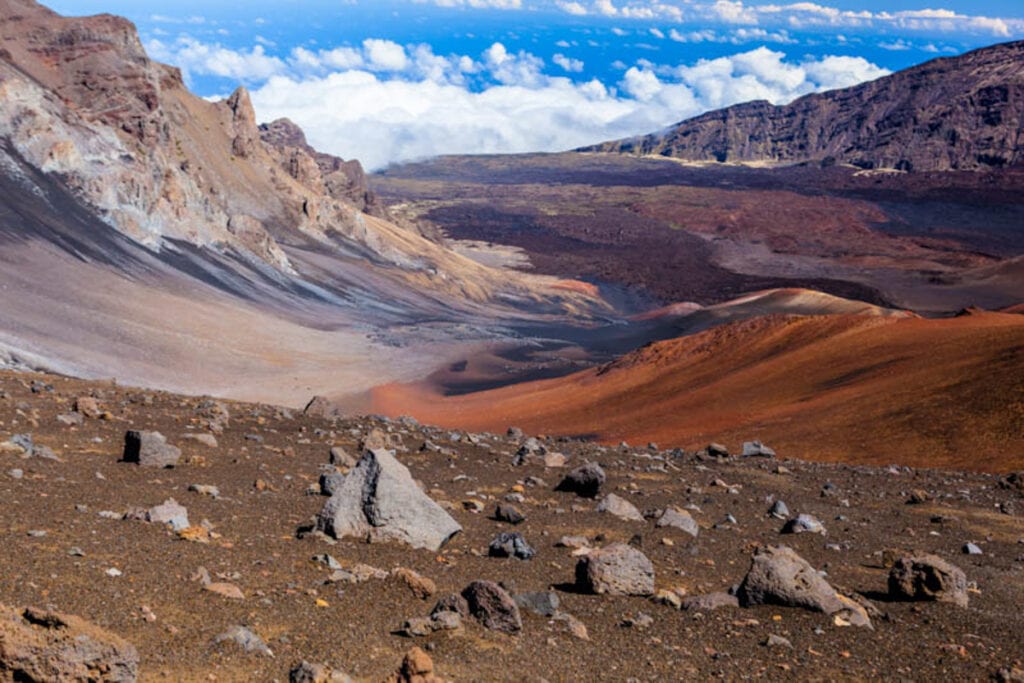
The park actually has two districts, and the Summit District is the part to visit if you have limited time. At the top, you can hike several trails, of varying length and difficulty.
Hiking into the crater is a bucket-list item for many visitors to the park. The Sliding Sands Trail takes you about 2 miles down for a total of 4 miles out and back. The overlook into the crater is spectacular.
Also look for rare forest birds (bring your binoculars!), or admire the local flora, including the endangered silversword, which is endemic to Hawaii.
While you can camp at the summit, most people visit for the day. You can do the scenic drive up to the summit independently, or opt to join a group tour.
The Summit District is about an hour’s drive from Kahului and Kihei, and about 90 minutes from Lahaina. Within the park, itʻs about a 30-minute drive from the entrance gate to the summit itself.
Make sure you dress warmly, because the temperature at the summit of Haleakala is 20 degrees (or more!) lower than on the island floor. At sunrise, or sunset, expect to feel cold.
The Kipahulu District of the park is accessed via the Road to Hana, about 12 miles past the town of Hana. Hike the famous Pipiwai Trail, or view the famous Pools of ʻOheʻo from the Kūloa Point Trail.
Contributed by us
5. Arches National Park, Utah
Arches National Park is located in Southern Utah and is known for its 2,000 natural red rock arches, towering pinnacles, and giant balanced rocks.
It has many hiking trails, many of which are considered easy to moderate, plus a few longer hikes for those who enjoy venturing out a little longer. The park is one of the must-visit places in Utah.
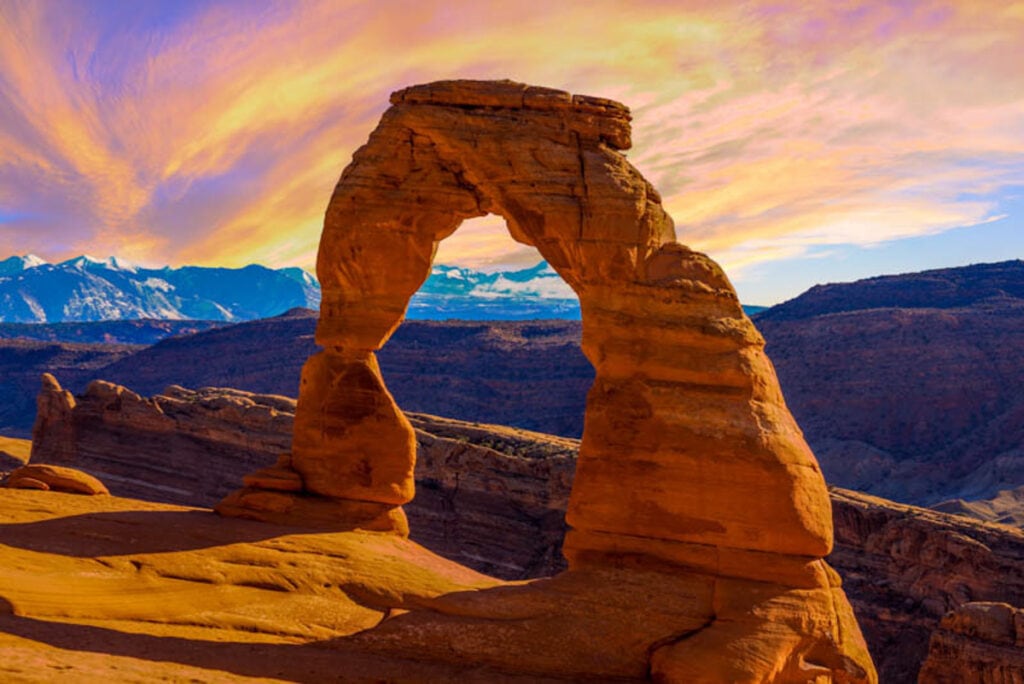
The most well-known hike in the park is Delicate Arch. This is the iconic arch that is found on the Utah license plate. The hike to Delicate Arch is 3 miles out and back through varied terrain the entire time.
Devils Garden is another popular hiking area where you can hike to closer arches like Landscape Arch or Double O Arch or do the entire 7-mile loop. The Windows area is another popular spot where you can see three majestic arches in a short 1-mile loop.
For those looking for a little more adventure, you may want to consider grabbing a permit to hike Fiery Furnace. This area can be explored on a ranger-led tour and sells out months in advance due to its popularity.
While most of the key areas of Arches National Park can be visited in a day, it would be best to have at least 2 days to soak in the beauty of the landscapes and hike a variety of trails.
This park can get very crowded, especially during its busiest time of year, from March to October. If you plan on visiting during these months, try to go as early as possible in the day and bring plenty of water to battle the heat.
Temperatures in the summer months can reach 100°F and shade is hard to come by, making Arches National Park one of the US national parks to visit in winter!
Contributed by Margie from DQ Family Travel
If you are looking to rent a car for your national parks trip, consider Discover Cars! They scour multiple providers to get the best price for you, including brands like Hertz, Enterprise, Alamo, Budget, and Sixt.
6. Grand Canyon National Park, Arizona
The Grand Canyon is one of the most recognizable natural wonders on the planet, and visiting Grand Canyon National Park should definitely be on every outdoor enthusiast’s bucket list.
The Grand Canyon is one of Arizona’s top attractions, and in fact, it is one of the most visited places in the USA.
The South Rim is easier to access than the North Rim, although both rims are part of the National Park (the West Rim is not).
The South Rim is the most popular destination for visitors to the park, and hiking, biking, driving tours, and mule trips are all ways to appreciate the fabulous views.
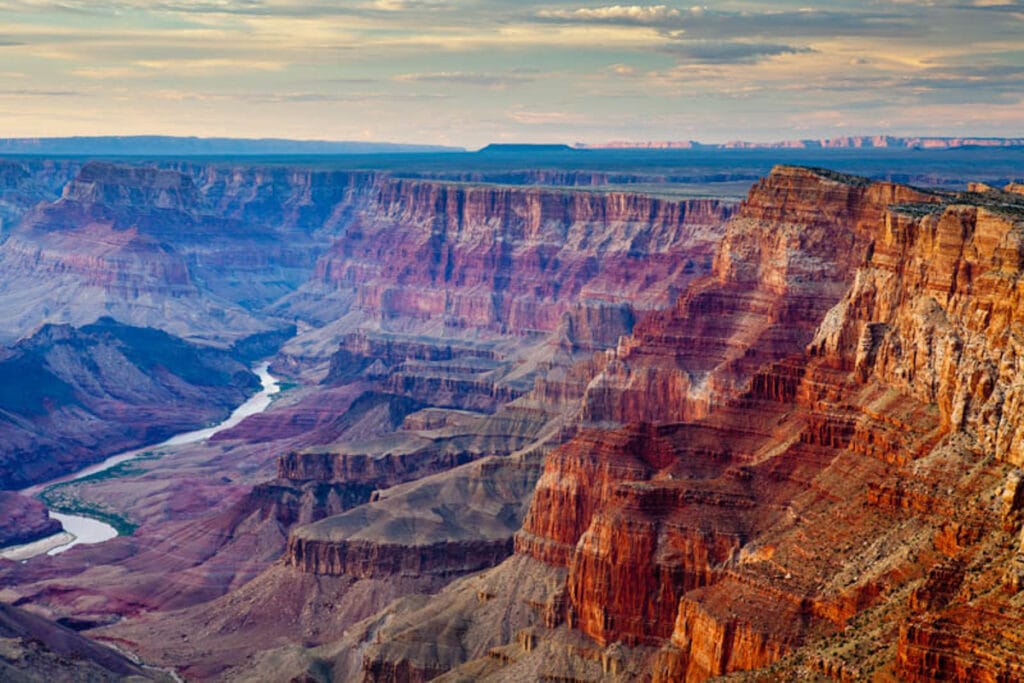
The two scenic driving routes at the South Rim are Desert View and Hermit Road. Each of these drives offers several vista points, and you can park and get down to take in the views and snap photos.
During peak season, Hermit Road may be closed to private vehicles, and you can walk, bike, or take the free shuttle instead.
Hiking trails at Grand Canyon National Park range from easy walks along the rim and day hikes into the canyon and back, to challenging backpacking trips that take you down into the canyon, and even a rim-to-rim hike.
Mule trips go along the rim or into the canyon with an overnight stay at Phantom Ranch.
Many visitors visit Grand Canyon National Park as a day trip from Las Vegas. To be able to savor the beautiful vistas at leisure and do some hiking, allow 2 or 3 days.
Grand Canyon National Park tends to be very crowded during the season, which starts in late spring and ends in the fall. Visit in early spring or late fall for fewer crowds.
A winter visit to Grand Canyon National Park will likely offer more solitude: bundle up and enjoy the scenery without the crowds! Viewing the Grand Canyon with a dusting of snow on it is magical.
Contributed by us
7. Yosemite National Park, California
Due to its proximity to both San Francisco and Los Angeles, Yosemite National Park is one of the most popular national parks to visit in California.
The park was designated as the second national park in California and the third national park in the United States and it is well worth visiting.
Take a day trip to Yosemite National Park in the spring and you’ll be treated to beautiful gushing waterfalls and gorgeous granite rock formations.
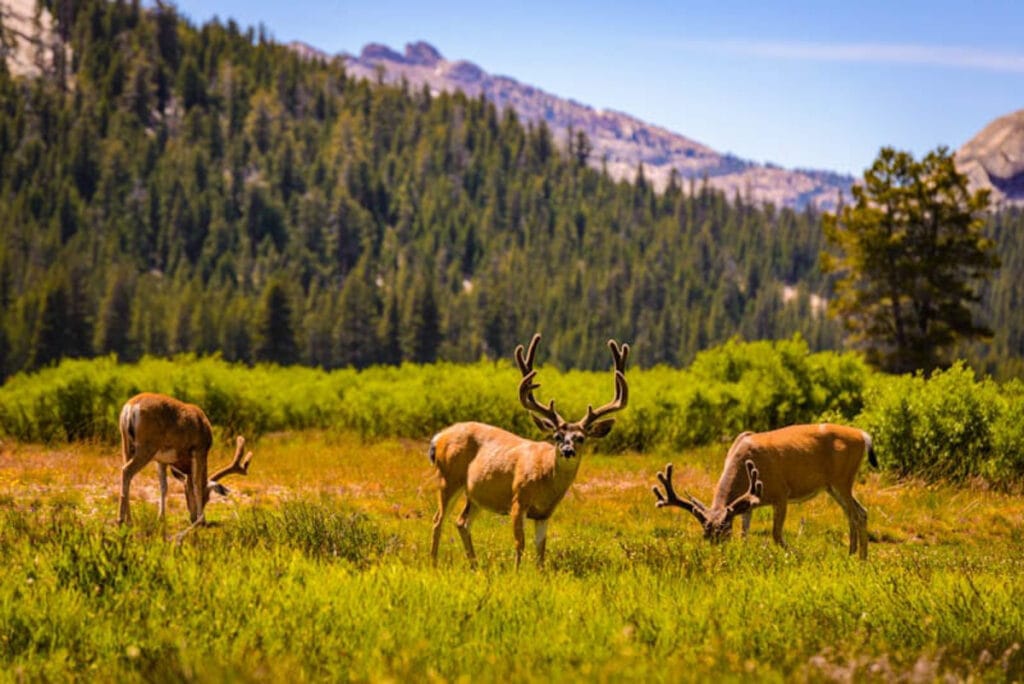
The Yosemite Valley is famous for its namesake Yosemite Falls as well as Bridalveil Fall, Vernal Fall and Nevada Fall.
Both Yosemite and Bridalveil Falls are easily seen from short hikes around the bases of the waterfalls and they can be seen from multiple viewpoints throughout the park.
Vernal and Nevada Falls require a strenuous hike to reach, but they are well worth the effort. All of these waterfalls run rampant during the spring with the melting snow but most run dry by mid-summer.
Rocky granite mountain peaks can be seen throughout the park. The most famous cliffs are Half Dome and El Capitan. To see them both and Bridalveil Falls, be sure to check out Tunnel View. This viewpoint is a great pit stop for photos and is very popular.
While you can visit Yosemite National Park for the day, you really need 2 or 3 days to enjoy the park in depth. Yosemite is one of the most popular weekend getaways in California, because a weekend allows you to see and do quite a bit in the park.
For the best views of the gushing waterfalls, be sure to visit Yosemite during the spring.
However, summer and fall are also great times to visit, as you get a chance to experience warm weather in the summer months and beautiful golden foliage in the fall.
And winter makes Yosemite a snowy wonderland. With no crowds, you can enjoy the magnificent scenery in peace and quiet.
Contributed by Constance from The Adventures of Panda Bear
8. Rocky Mountain National Park, Colorado
Located just outside Denver in Colorado, Rocky Mountain National Park is a thrilling place to visit for hikers, wildlife spotters, and photographers.
It has a wide variety of picturesque habitats including craggy peaks, glacier-fed lakes, and lush coniferous forests.
No wonder it’s one of the best places to go in Colorado!
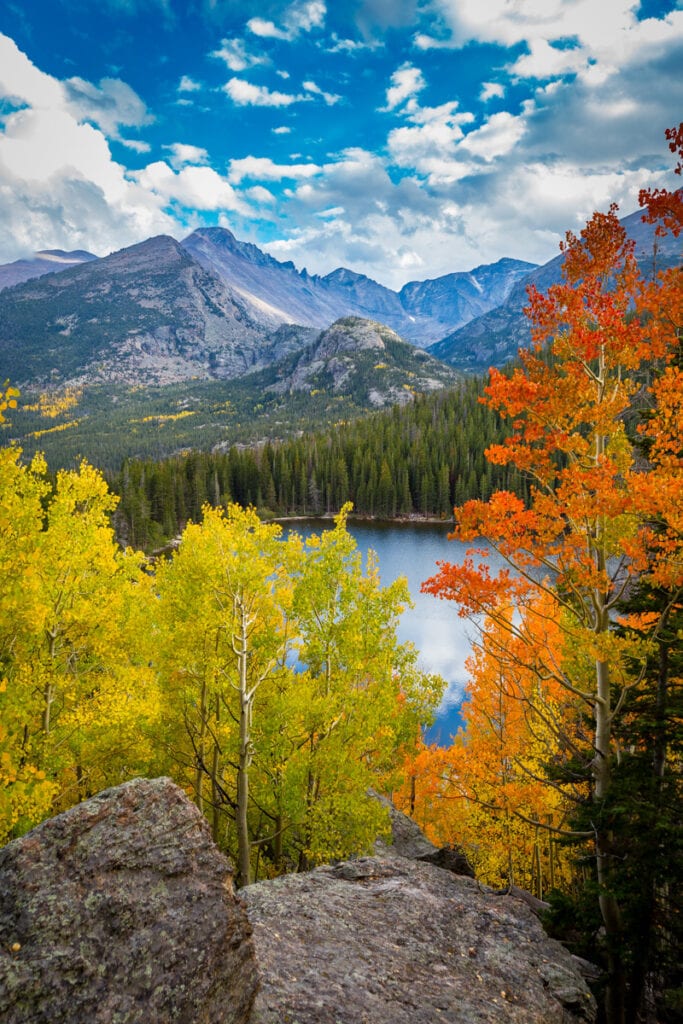
Everyone who visits will want to be sure and cruise the famous high altitude Trail Ridge Road across the park’s length, take a stroll around beautiful Bear Lake, and hike to spot wildlife like moose, bighorn sheep, and black bear.
While it’s easy to spend a full week here, 3 days feels like an absolute minimum to have time to check out both the east and west sides of the park, hike a trail, and enjoy the gateway towns of Grand Lake and/or Estes Park.
While Rocky Mountain National Park is beautiful year round, visitors should plan on exploring the park between mid-June and early October if they want to count on all trails and roads being open and clear of snow.
Fall is a fantastic time to visit, to witness the thrilling elk rutting season, when bugling male elk duke it out for mates. Fall is also the time when the aspen leaves turn brilliant yellow, making Rocky Mountain National Park one of the best US national parks to visit in the fall.
Before you go, read more about the area and some tips for visiting Rocky Mountain National Park in order to get the most out of your trip.
Contributed by Stephanie from Explore More Clean Less
Want to do your National Park trip in an RV? If you don’t own an RV but would like to rent one for your great outdoors trip, check out Outdoorsy to find the perfect vehicle!
9. Crater Lake National Park, Oregon
Crater Lake National Park is the highlight of natural attractions in Oregon. The park centers around Crater Lake, which is the water-filled caldera of a once-massive volcano.
Today, the lake is the deepest in the United States and an unforgettable sight. The enormity of Crater Lake is lost in photos, and the astonishingly deep blue hue of the water can’t be reproduced.
You have to visit to experience its surreal beauty for yourself!
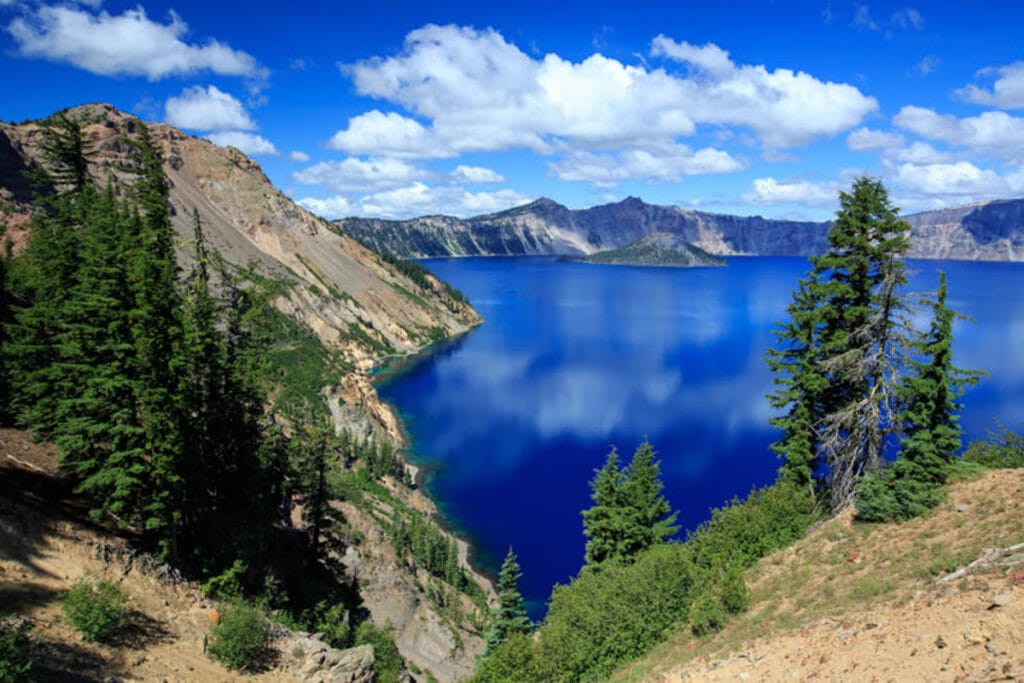
Crater Lake is best explored via Rim Drive. The 33-mile-long road circles the rim of the lake, with plenty of spots to pull over and enjoy the view.
You can also explore the lake via boat tours, though reaching the dock requires a hike down over 700 feet. And you’ll have to hike back up after the tour!
Crater Lake National Park is also full of other opportunities for outdoor fun such as fishing, swimming, and plenty of hiking,
One day is long enough to visit Crater Lake National Park for most visitors. This is enough time to tour Rim Drive, take plenty of photos and even join a boat tour. An extra day can be used for hiking one of the many trails.
Summer is the best time to visit Crater Lake National Park. In July and August, Crater Lake has spectacular weather and snow is rarely an obstacle.
Winter is certainly beautiful, but extremely heavy snowfall closes many roads and limits almost all activities. These snows arrive in early fall and begin receding in the spring.
Contributed by John from The Hangry Backpacker
10. North Cascades National Park, Washington
Looking for a stunning drive through emerald-green forests dotted with piercing snow-capped peaks? Or perhaps a meandering hike past electric blue glacial lakes is more your style.
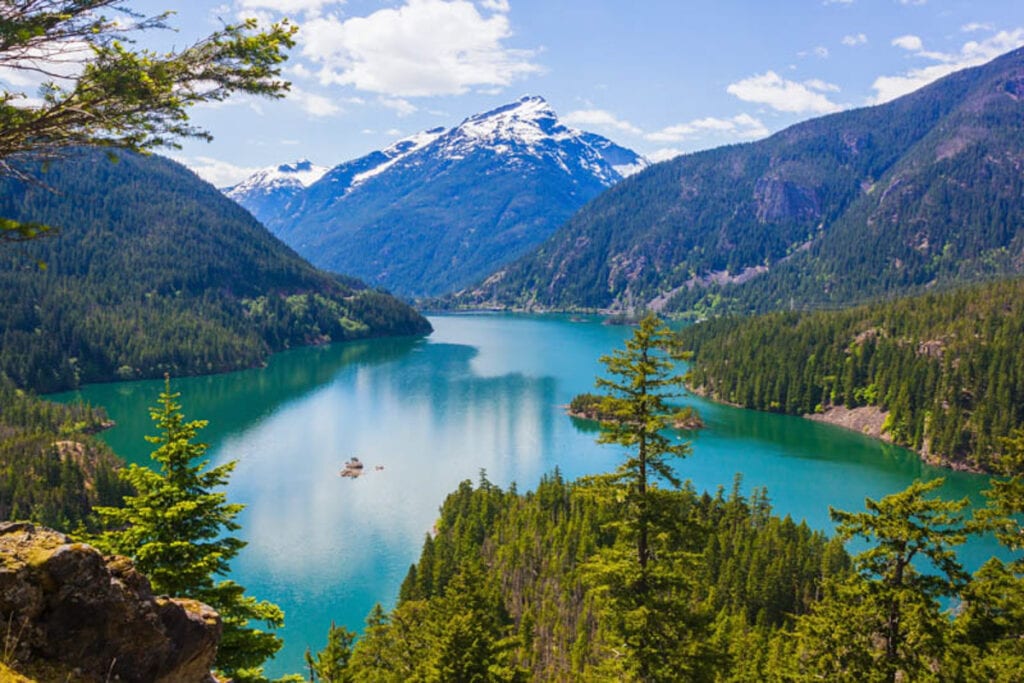
Well, look no further.
North Cascades National Park is one of the least visited national parks in the United States and also one of the most beautiful.
Visiting the North Cascades without a vehicle is difficult due to the remote Northern Washington location and the distance between the sights.
Any visit to the park should include a visit to Diablo Lake, Washington Pass Overlook, Rainy Pass Trail, Blue Lake Trail, and, if you have the time, a hike through Cascade Pass to the Sahale Arm.
Although lengthy, this 9-mile out-and-back hike is one of the most beautiful in Washington State and can be hiked by people of all ages. It offers spectacular views of mountains and glaciers.
Your road trip through the North Cascades can be done in as little as 2 days, but give yourself 3-4 days if you plan on doing any hiking at all.
Although summer is the most popular time by far to visit the North Cascades, spring brings the mountains to life with a bloom of purple and yellow wildflowers, and in fall the crisp air and changing leaves make for prime hiking conditions.
Contributed by Geena from Beyond the Bucketlist
11. Hawaii Volcanoes National Park, Big Island, Hawaii
Located on the Big Island of Hawaii, Hawaii Volcanoes National Park is one of the most unique national parks in the west. It’s home to two of the most active volcanoes on the planet: Kīlauea and Mauna Loa.
Hawaii Volcanoes National Park is a UNESCO World Heritage Site and an International Biosphere Reserve. It is one of the top places to visit in Hawaii!
If you are lucky, you may be able to witness a lava flow when you are in the park. Lava may be visible from many areas and overlooks around Kaluapele (the Kīlauea caldera), within the national park. Dusk is a great time to see the glow of lava.
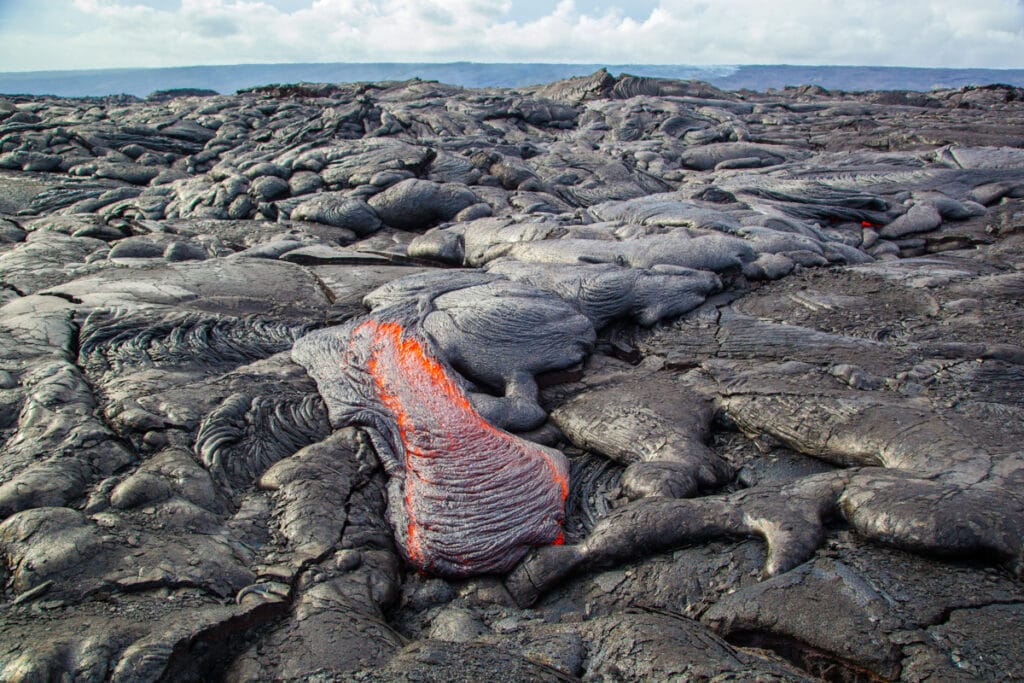
Drive the scenic Chain of Craters Road, an 18.8-mile drive that leads all the way to the ocean. The drive offers beautiful scenery and a chance to see old lava fields. There are no services along the drive.
The Crater Rim Drive is another scenic drive through the park, with numerous overlooks featuring crater views.
Exploring the Thurston Lava Tube is another fun thing to do in Hawaii Volcanoes National Park. Created by a river of molten lava, the tube can be accessed by a short day hike. Visit early or late to avoid crowds.
There are many day hikes you can do in the park, ranging from easy to challenging. The Kīlauea Iki Trail takes you through a rainforest and down to the solidified lava floor of the Kīlauea crater. It’s a strenuous but rewarding hike.
Although you can see the highlights of Hawaii Volcanoes National Park in one day, you’ll want to allow more time (at least 2-3 days) to get the chance to view lava, and to soak in the different landscapes in the park.
Visit between November and March for a warm weather winter getaway. It tends to be cool at the 4,000-foot elevation of Volcano Village, and rain is common, so bring both layers and rain jackets!
Contributed by us
12. Glacier Bay National Park, Alaska
Glacier Bay National Park in Alaska is a must visit, for its spectacular scenery and its remoteness.
From snow-capped mountains to spectacular glaciers and lush forests, the park is one of the most beautiful national parks in the west.
Glacier Bay National Park is mainly water. The land portion is mountainous and contains no roads or trails. The bay is a natural water route from Alaska’s Inside Passage to the signature glaciers of the park.
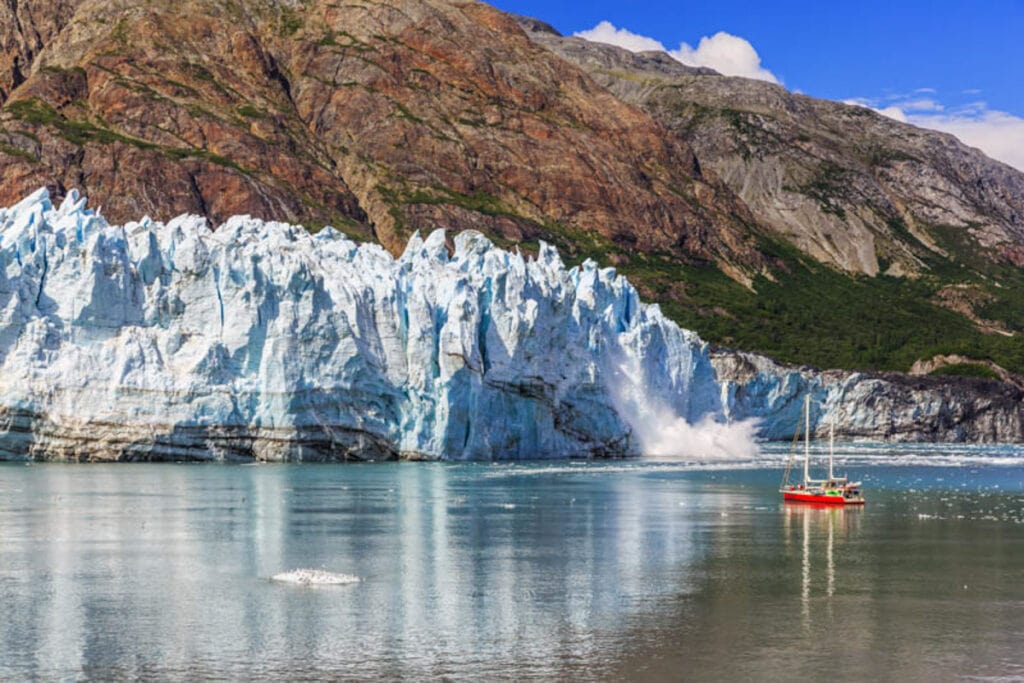
Ninety percent of the people that visit the park are cruise ship visitors, with the remaining ten percent a small population that come in by plane or the marine highway system through the small town of Gustavus.
There are only a handful of things to do in the park: either a hike through the back country if visiting via Gustavus or gazing out at the national park from a boat.
That boat could either be a kayak, a week-long Alaska cruise with Glacier Bay as part of the itinerary, or a day charter. or tour boat
Other than enjoying the beautiful scenery, watch for wildlife: brown bear, mountain goats, sea otters, sea lions, harbor seals, bald eagles, and a variety of seabirds can be seen here.
The best time to visit Glacier Bay National Park is in the summer, when one can hear the icebergs calving, and is pretty much the only time cruise ships visit Glacier Bay National Park.
Contributed by Ruby from A Journey We Love
13. Saguaro National Park, Arizona
Showcasing the mighty saguaro cactus, Saguaro National Park makes for a wonderful western US national park getaway in the winter, when much of the country is digging out of snowstorms.
The park is one of the must-visit places in Arizona.
The park features the largest fields of saguaro cactus you’ll find anywhere, and the desert sunrises and sunsets are spectacular.
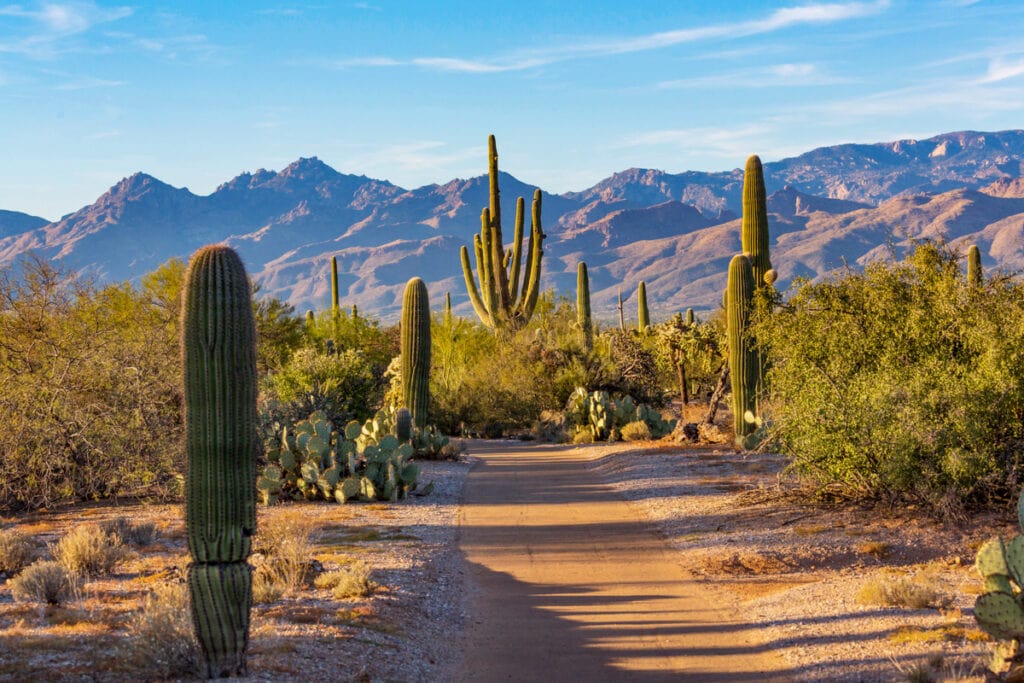
Saguaro National Park is split into two districts — east and west — separated by the city of Tucson. It takes about an hour to drive from one side of the park to the other.
The west district is the more popular side of the park, and features dense stands of the majestic saguaro, some of which are 50 feet tall! The saguaro is a long-lived plant, often living up to 250 years.
You’ll find hiking trails in both districts. In the west, called the Tucson Mountain District, hike the Valley View Overlook Trail. This short and easy hike leads to a viewpoint from where you can see a forest of saguaro.
Another short but rewarding hike in the west district is the Signal Hill Petroglyphs Trail. You’ll see the ancient rock art from the trail as you walk. The petroglyphs were created by the Hohokam people many centuries ago.
In the east side, the Rincon Mountain District, the Mica View Trail is a flat and easy hike that offers great views of the mountains.
Drive the Cactus Loop Drive on the east side, and Bajada Loop Drive on the west. They are scenic drives that provide access to many trails and overlooks in the park.
Make sure you enjoy sunset in the park!
On the east side, the best place to view the sunset is either the Tanque Verde Ridge trail or the Javelina Rocks pullout. On the west side, Gates Pass, at the end of Speedway Blvd to the west, is the perfect spot to view the sunset.
We suggest at least 1.5 to 2 days in Saguaro National Park if you want to do a few short hikes. Spend one day in each section of the park, to avoid driving back and forth.
Saguaro National Park is a desert park that’s best visited in the cooler months of the year. It’s the ideal winter getaway!
Contributed by us
14. Sequoia National Park, California
Sequoia National Park in California’s Sierra is not to be missed. It is home to the largest trees on earth and one of the most unique national parks of the western USA.
Start your trip with a stop at the small but informative Giant Forest Museum, where you can learn all about the incredible giant sequoias. Then get out and walk or hike among the trees.
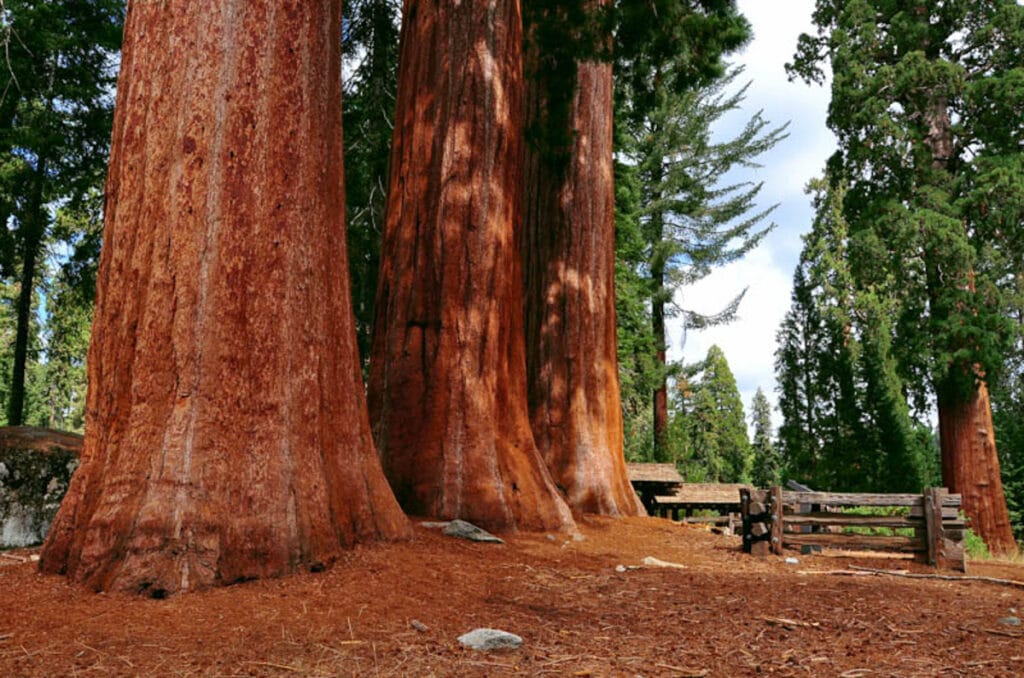
The biggest tree on the planet is the General Sherman Tree. It is a short walk on a paved path from the parking lot. Admiring General Sherman is one of the best things to do in Sequoia National Park!
At one point, the path actually goes through a tunnel carved through another sequoia that fell across the path (the trunk is so wide that you can traverse the tunnel without bending over!).
From there, you can do an easy 2-mile loop along the Congress Trail, which passes several more of the largest trees, which have all been given historical or political names, including the Chief Sequoya, Lincoln, and President trees.
Two small groves are called The House and The Senate. There are plenty of side trails, which take you to more of these incredible giants. One tree, the aptly named Room Tree, has a hollowed out trunk that is as big as a room: yes, you can walk inside it.
Another lovely hike is along the flat Big Trees Trail, that encircles the Round Meadow. This is a great spot at dawn and dusk to see wildlife such as black bears foraging for food.
You can see the highlights of the park in two days, though if you like to hike, you could easily stay longer, and also visit the adjoining Kings Canyon National Park.
Sequoia and Kings Canyon National Parks make for one of the best west coast weekend getaways if you enjoy hiking and the outdoors.
From spring to early fall are the best times to visit, as the area gets covered in snow in winter and much of the park closes down.
Contributed by James from Parks Collecting
15. Joshua Tree National Park, California
Joshua Tree National Park is one of California’s most iconic national parks, best known for its unique vegetation and eye-catching geological features.
With spiky Joshua Trees, massive eroded boulders, and hidden palm oases scattered across the desert, there’s plenty of natural scenery to enjoy when visiting Joshua Tree National Park.
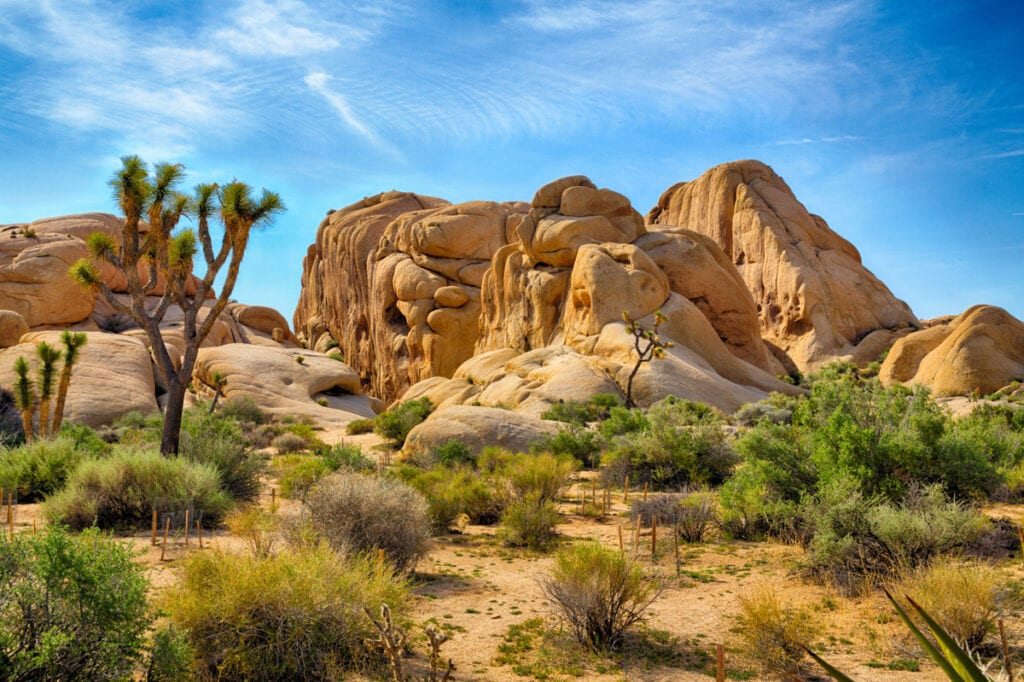
One of the best things you can do in the park is to explore by foot. There are several trails that you can hike or shorter nature walks to view the park’s impressive landscapes up close.
If you’re not a fan of hiking, take a drive and stop at the scenic pullout points along the road. Some of the park’s top attractions, like Skull Rock and the Cholla Cactus Garden, can be enjoyed without having to venture far from the road.
Other fun things to do in Joshua Tree National Park are rock climbing, camping, and stargazing.
At minimum, you will need one day in Joshua Tree National Park to see all the highlights and do some short hikes. With two days you will be able to complete longer hikes in a few different areas of the park.
The best time to visit is in spring and fall, when temperatures are most comfortable, but winter can be enjoyable as well, especially if you want to avoid peak season crowds.
Contributed by Rhonda from Travel Yes Please
16. Grand Teton National Park, Wyoming
The Teton Range rises abruptly from the floor, creating a fabulous backdrop for the Snake River and surrounding beautiful terrain.
Grand Teton National Park in Wyoming is a must-visit national park in the west for all lovers of beautiful scenery and adventure.
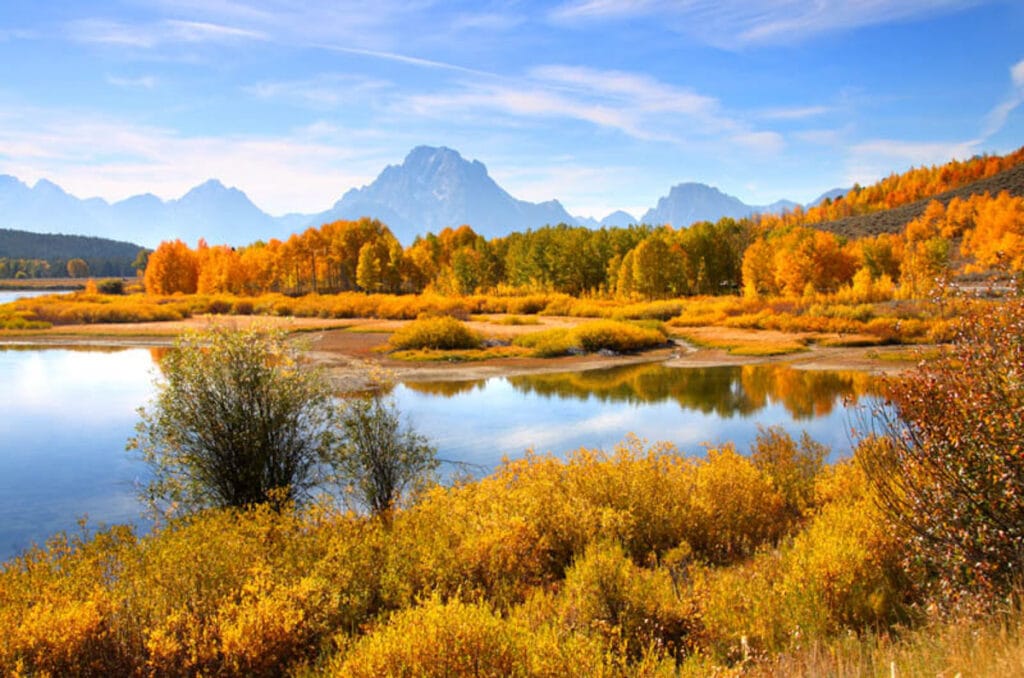
There are over 200 miles of trails in the park, and hiking will allow you to get up close to the scenic vistas in the park and possibly spot wildlife, from moose and bison to black bear and coyotes. The river area is home to numerous birds.
The Jenny Lake Loop is just under 8 miles, and rated moderate. It is a super scenic hike, with the most breathtaking views from the east side of the lake. You can walk as far as you want and then turn back.
The Cascade Canyon hike is considered one of the best hikes in the park. It’s a strenuous hike but noted for the views into the Cathedral Group of the Tetons.
Other than hiking, floating the Snake River is a popular activity. You can also go boating or fishing. The scenic drive through the park is a must.
Winter brings snow-covered landscapes perfect for snowshoeing and cross-country skiing.
Allow for several days to enjoy all that Grand Teton National Park has to offer and just to savor the serene beauty of your environment.
While you can visit Grand Teton National Park in winter to enjoy winter activities, you will want to visit between late spring and early fall to enjoy hiking and wildflowers.
Contributed by us
17. Zion National Park, Utah
One of Utah’s Mighty 5, and one of the national parks near Vegas to put on your list for Sin City, Zion National Park is known for its spectacular scenery and epic hikes.
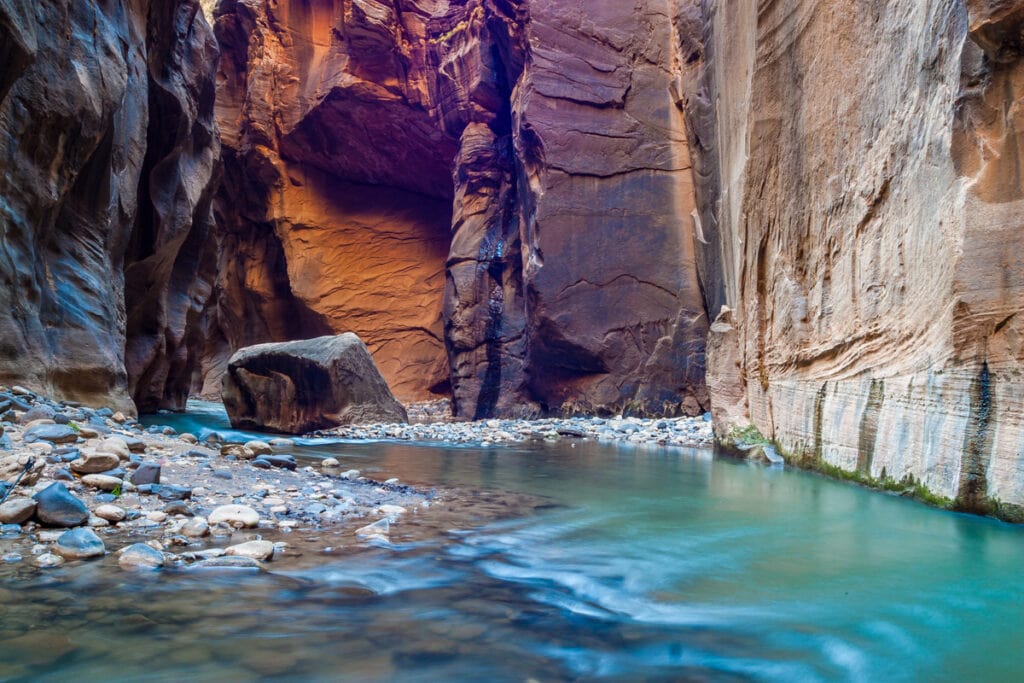
Zion Canyon Scenic Drive is the road that goes through Zion Canyon and offers access to trailheads and sights. In season, you have to ride the free shuttle, but in the winter months you can drive your own vehicle through the park.
The two bucket-list hikes in the park are Angel’s Landing and The Narrows.
Angel’s Landing is a strenuous hike that ascends to a stunning viewpoint over Zion Canyon. It’s not for folks who don’t have a head for heights: there are super narrow sections and steep dropoffs. You need a permit to do this hike.
The Narrows is the narrowest part of Zion Canyon. Hiking The Narrows means you’ll be hiking through the Virgin River, which flows through Zion Canyon. It’s an exciting hike but requires some planning.
For an easy walk, consider the scenic Riverside Walk, a paved trail that runs alongside the river. Or do the short hike to the lower Emerald Pools.
Drive the Zion-Mount Carmel Highway, another scenic drive that winds up the mountains. Here you can hike the short Canyon Overlook Trail (the trailhead is just past the Mount Carmel Tunnel) for beautiful views.
The Kolob Canyons are a must-explore: they are lesser visited so you’ll get a respite from the crowds in season. And the scenery is stunning.
Allow for 3 to 5 days if you want to do Zion’s bucket-list hikes and enjoy the rest of the park as well.
Zion is one of the most popular national parks in the US, so you’ll want to visit off-season if you can. Late fall, winter, and early spring are more peaceful times in the park.
Contributed by us
18. Mount Rainier National Park, Washington
Mount Rainier National Park is one of the most unique protected areas in the United States, due to its sweeping pines, year-round snowfall and, of course, the towering 14,410-foot active namesake volcano.
It is a must for your Pacific Northwest bucket list!
Mount Rainier National Park caters to everyone from solo trekkers to families looking for a weekend getaway.
Though you can get a taste of the park from the inside of your vehicle on scenic drives, thrill-seekers must hike a few miles to get the extraordinary payoff views.
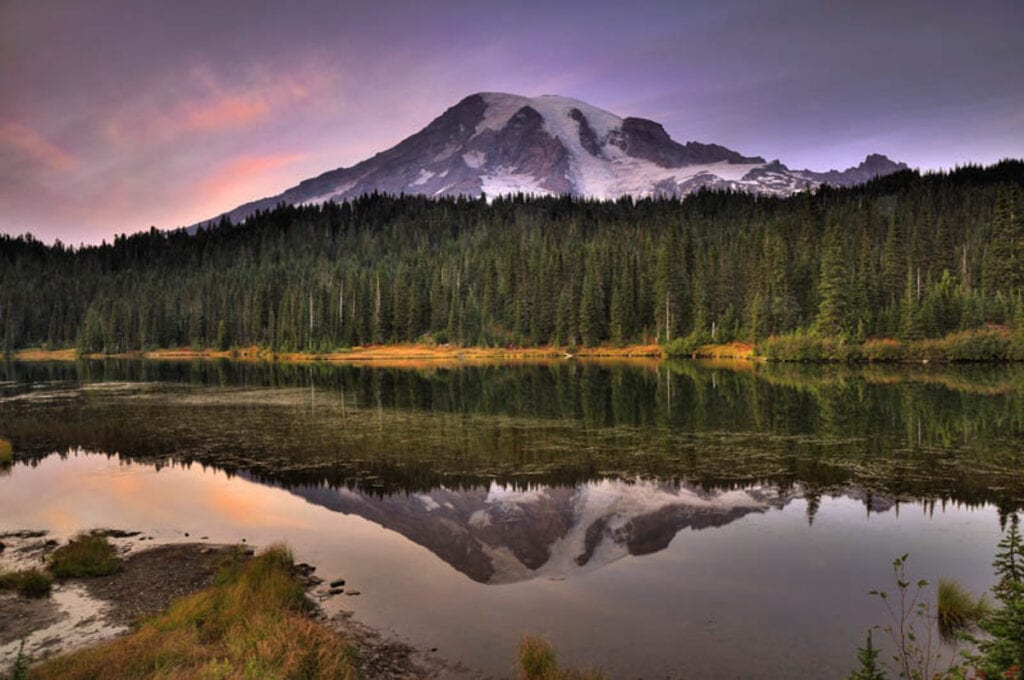
One of the best hikes in the park is Skyline Trail, a 5.9-mile loop that takes you up the slopes of Mount Rainier inside the Paradise area of the park.
Getting more than 640 inches of annual snowfall, Paradise is officially the snowiest place in the United States. That means you’ll have to pack your waterproof hiking boots, because you’ll be hiking in snow year-round on this trail.
Though Mount Rainier National Park encompasses more than 369 square miles of alpine wilderness in Washington, much of the park is covered in snow.
So even though it’ll take you a week or longer to see everything inside the park, the only time to do most activities is during the heat of summer — which is still relatively cold by many people’s standards.
Contributed by Jarrod from Ramble Around the World
19. Glacier National Park, Montana
One of the spectacular national parks in the west you can visit is Glacier National Park. Glacier is located in Montana and is one of the most beautiful parks in the United States.
Glacier National Park is home to waterfalls, great mountains, many hikes, backcountry trails, and stunning lakes. There is so much to do that you need at least five days to get a feel for this incredible national park.
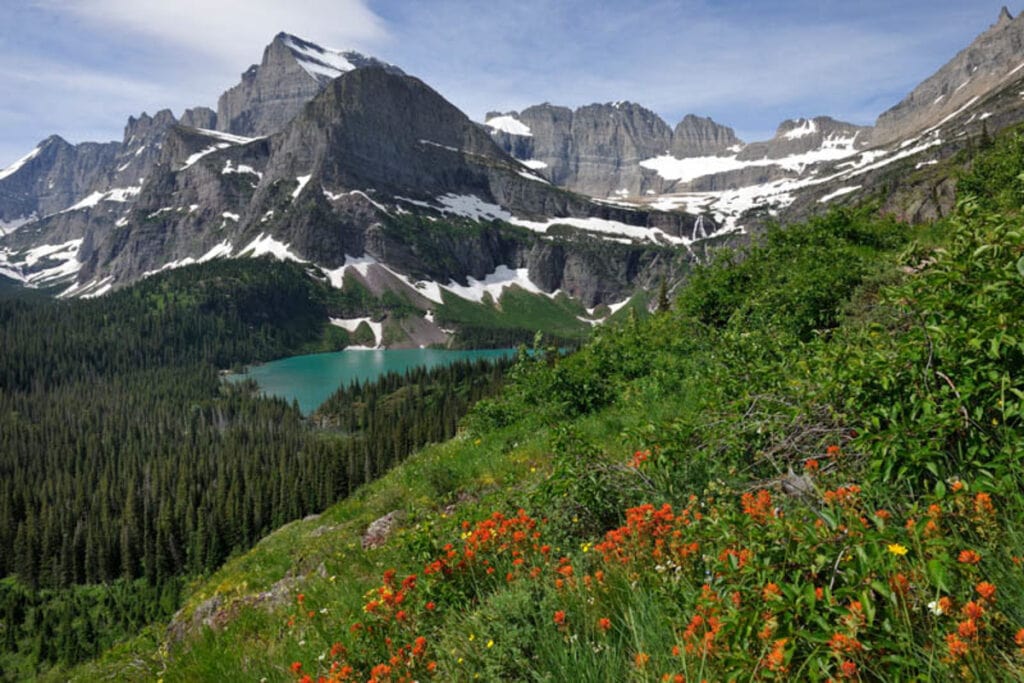
One of the best things to do in Glacier National Park is to hike Avalanche Trail.
This trail is one of the most popular trails in the park so get to the trailhead before 8 a.m. to get a parking spot. It features a gorgeous basin area with magnificent waterfalls on the mighty mountains and a stunning lake.
Another popular trail is the Hidden Lake Overlook. It is located in the Logans Pass area, one of the most picturesque areas of the park.
The trail is moderate and features a lookout over the lake. You can make the trail more difficult by hiking down to the lake!
If hiking isn’t your thing, you can also explore the Many Glacier area. This area is one of the best photography spots in the park.
The tall mountains right next to the lake and the old lodge are stunning. There is also plenty of wildlife in this area.
Glacier National Park is one of the best US national parks to visit in the summer, when all the roads and trails are open, although it is a wonderland in the winter if you enjoy winter sports.
Contributed by Michelle from The Wandering Queen
20. Bryce Canyon National Park, Utah
Bryce Canyon National Park has a stunning landscape of unique geologic formations called hoodoos!
Also called fairy chimneys and earth pyramids, hoodoos are carved out of rock plateaus by rain and ice until eventually these unique towers are formed.
When you arrive, you’ll want to travel on Route 63 directly into the park entrance, as this is the main road that spans the entire park. As you move into the park, visit Bryce Amphitheater for unforgettable views of the hoodoos.
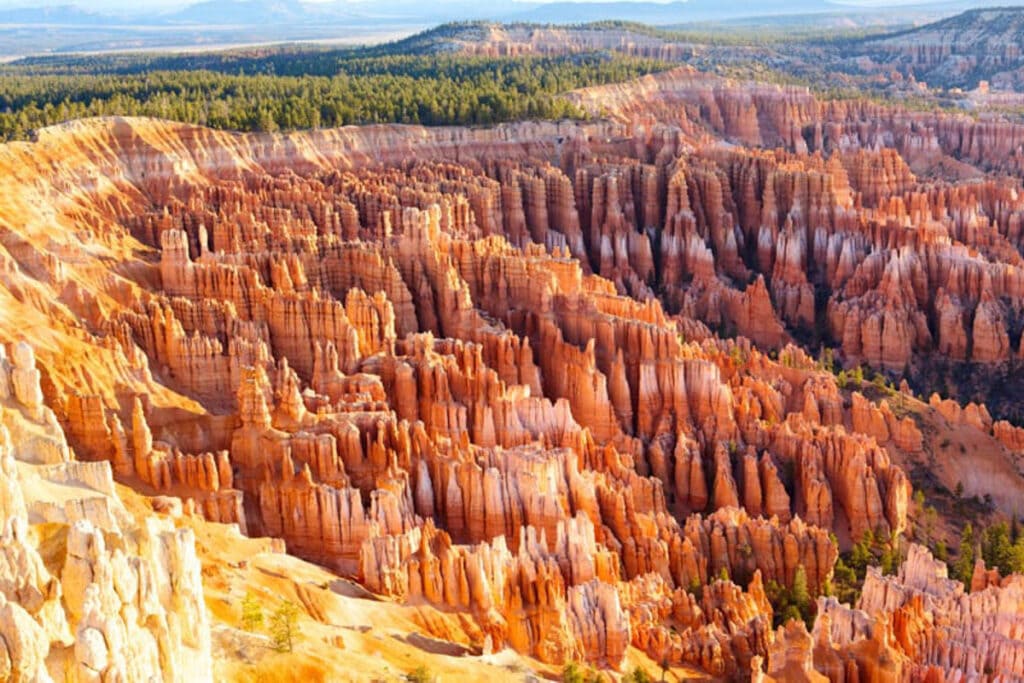
Inspiration Point and Bryce Point are the most popular viewing areas. Hikers can descend into the amphitheater via the Under-the-Rim Trail, which follows the canyon for 23 miles!
For an easier hike into the amphitheater, try Queen’s Garden trail, a 1.8 mile out-and-back trail. Continuing along the main road, be sure to stop at Natural Bridge for an amazing arch naturally carved in the rock!
While it is a large park, you can see the highlights of Bryce Canyon National Park on a weekend getaway to Southern Utah. The best times to visit are fall through spring, to avoid the summer crowds and heat.
Winter in the park is beautiful, especially if you catch snow-covered hoodoos. However, consult the National Park Service for current conditions and any seasonal closures.
Contributed by Alanna from Periodic Adventures
21. Redwood National and State Parks, California
Redwood National Park is an often-overlooked national park in Northern California. Over five hours from any major city, it’s quiet, remote, and home to incredibly unique landscapes.
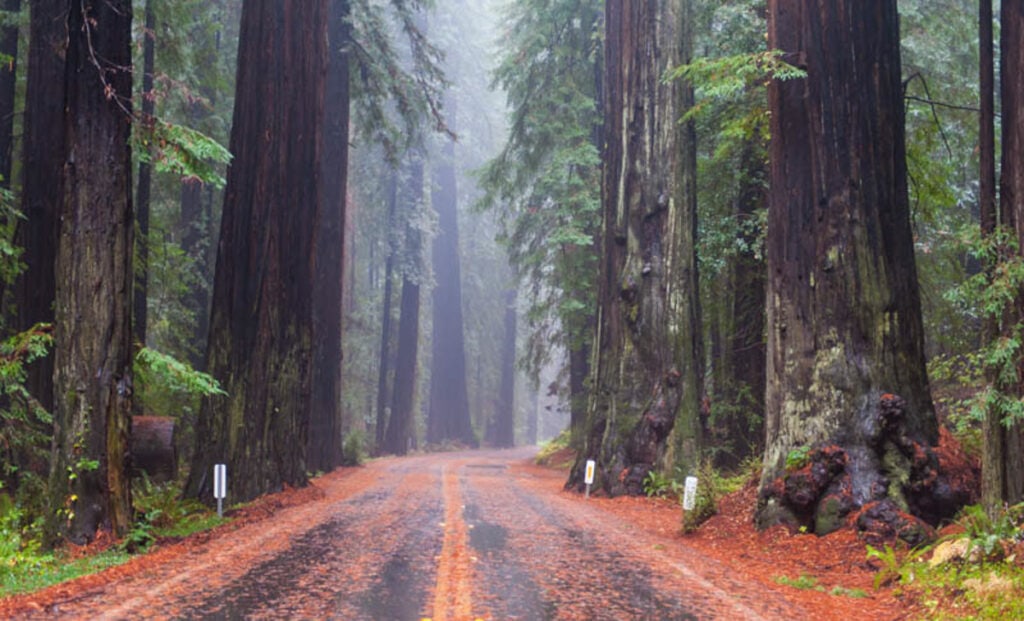
As you might have guessed from the name, Redwood National and State Parks are famous for their redwood trees.
The parks protect over half of the world’s old-growth redwoods.
Hidden among the 2,000-year-old redwoods is Hyperion, the world’s tallest tree. It stands at 379 feet, taller than the Statue of Liberty!
The best way to explore the redwoods is on a hike. Trails like Tall Trees Grove and the Cathedral Tree Loop allow you to explore the redwoods up close.
A drive along Newton B. Drury Scenic Parkway takes you through roadside redwood groves.
But Redwood National Park has so much more than just redwood trees.
You can also see fern-covered canyon walls on the Fern Canyon Trail.
Head over to Enderts Beach to take in the dramatic California coastline and explore the tide pools for starfish.
To explore all that Redwood National and State Parks have to offer, you should plan to visit for 3 to 5 days.
The best time to visit is between May to September. These are the driest months of the year and the best time for hiking and camping.
Contributed by Julia from Well Planned Journey
22. Olympic National Park, Washington
At about one million acres, Olympic National Park in Washington offers incredible diversity and a variety of spectacular landscapes.
You can explore rugged beaches to rainforests to mountains. It truly is one of the best national parks in the west and one of the best places to visit in the Pacific Northwest!
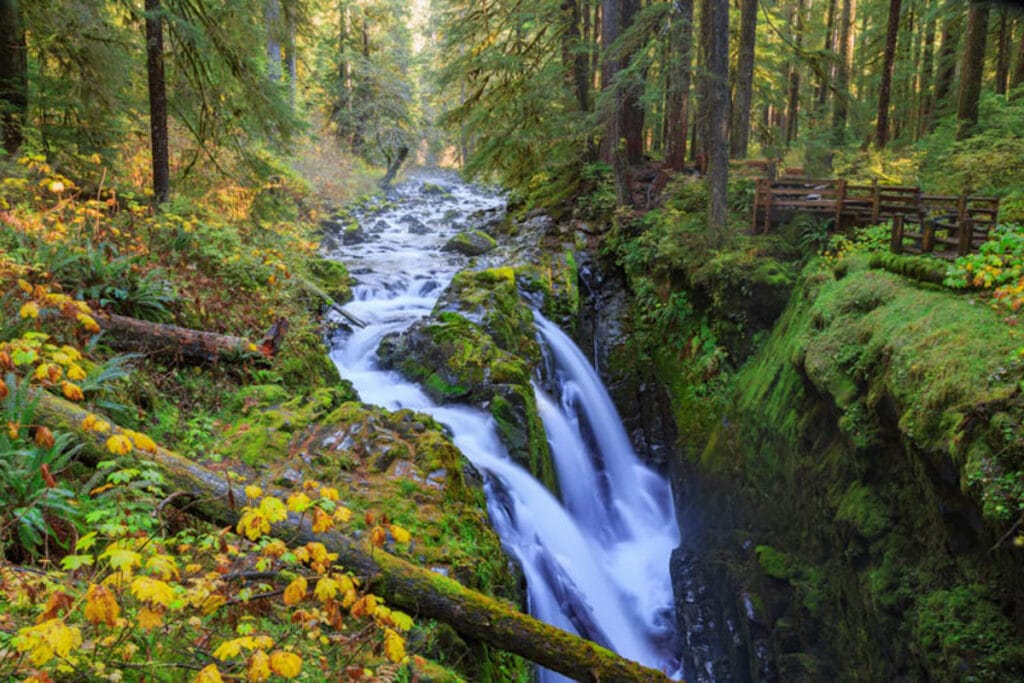
You will not want to miss hiking through the Hoh Rainforest on the Hall of Mosses trail.
Once done there, head over to the Spruce Nature Trail. Both of these are short and easy to get done in one visit.
Next, head to the coast to explore the ruggedness of Ruby Beach. Then visit the exposed roots and splendor of the Tree of Life at Kalaloch Beach. Last but not least, check out the hole in the rock at Rialto Beach.
For gorgeous waterfalls, head to the Sol Duc Falls Trail and the Marymere Falls. Then visit Lake Crescent, to grab a drink and a snack while taking in the beauty of the lake.
Last but not least, head to Hurricane Ridge for spectacular mountain views, Douglas firs, sitka spruce, and wildlife. You will want to do the challenging but beautiful Klahane Ridge Trail to appreciate the beauty of this area of the park.
We recommend giving yourself at least one week to explore all of Olympic National Park.
Summer is a great time to visit, but can be very busy. If you want to avoid crowds, then spring or fall is an ideal time to go!
Contributed by Bryanna from Crazy Family Adventure
23. Capitol Reef National Park, Utah
Capitol Reef National Park is probably the most underrated of the five national parks in Utah, but not less stunning than the others.
The crowds are significantly thinner and the views are breathtaking. If you’re looking to get away from it all, Capitol Reef should be on your list.
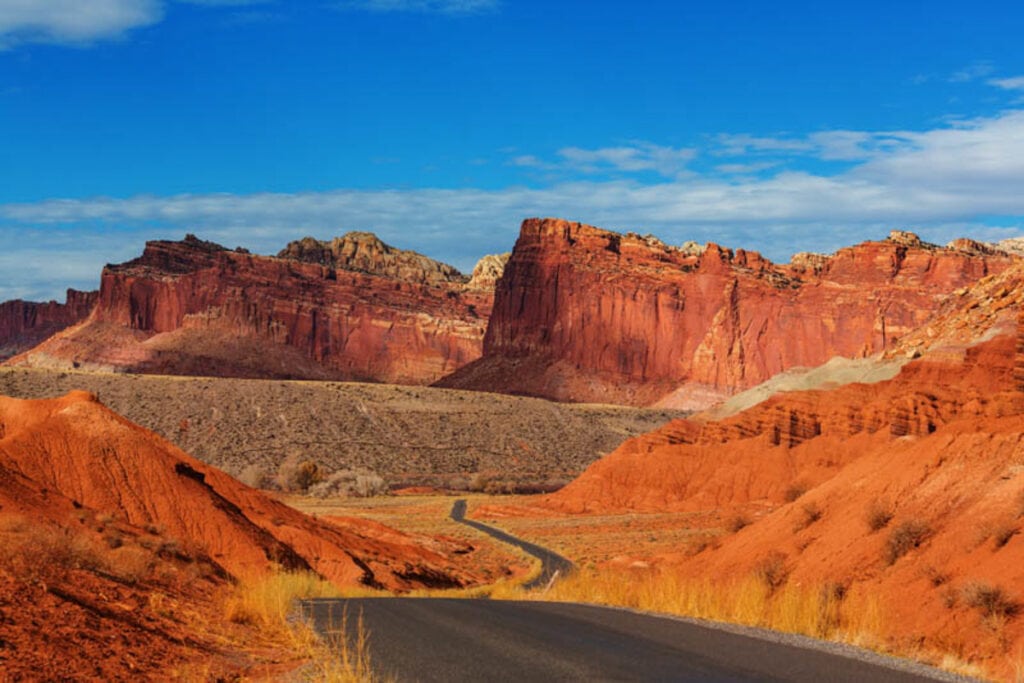
One of the best things to do in Capitol Reef is to hit the miles of hiking trails. There are several easy hikes that offer stunning views.
The Fruita District is the most accessible part of the park, and is home to trails like Capitol Gorge, a fairly flat, two-mile round-trip hike through a deep canyon.
Along the way you’ll see the Pioneer Registry, where pioneers etched their names into the canyon walls over one hundred years ago.
In the Fruita area you’ll also find homemade pies, cinnamon rolls, and sourdough bread at the Gifford House. Nearby, there are several fruit orchards where you can sample the local fruit for free.
To fully experience Capitol Reef, plan to spend at least three days in the park. Capitol Reef is a large park, and you’ll want to explore remote areas, like Cathedral Valley.
Capitol Reef has more pleasant weather year-round compared to the rest of Southern Utah. The best time to visit the park, however, is in early fall, when the weather is cool and pleasant for hiking.
There are few places as stunning as Utah, and Capitol Reef is no exception. Add this park to your Utah itinerary: you won’t be disappointed!
Contributed by Ale from Sea Salt and Fog
24. Carlsbad Caverns National Park, New Mexico
Carlsbad Caverns National Park, located in southern New Mexico near the Texas border, is one of the most underrated national parks in the country.
Located in the Guadalupe Mountain ranges, the park consists of a unique desert environment of yucca trees and a variety of cacti.
There are numerous hiking trails within the park and visitors can go backcountry camping in the wilderness.
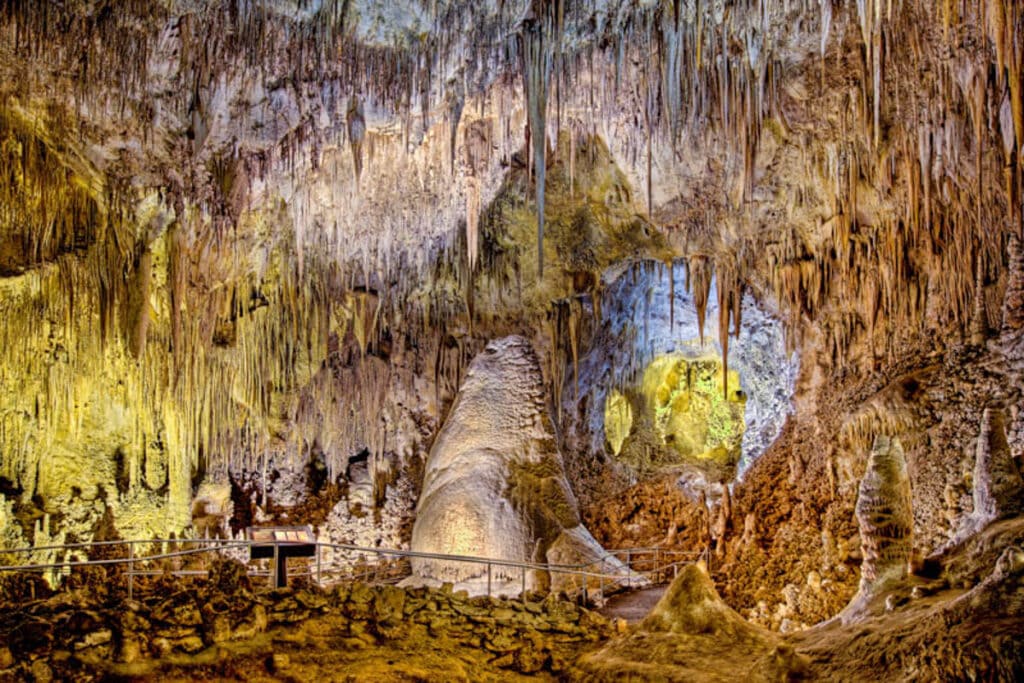
However, the highlight of Carlsbad Caverns National Park is the enormous limestone cave system and the unique geological formations inside the caves.
The striking beauty, vastness, and well-preserved status of the caverns have resulted in their designation as a UNESCO World Heritage Site.
Visitors from all over the world come here to see the unique formations and tours can get full in advance.
Visitors can see the caves and striking geological formations on a self-guided tour that starts at the Visitor Center. You need to set aside 2 to 3 hours to see the caves at a leisurely pace.
Other things to do in the park include viewing the exhibits at the Visitor Center, the scenic drive through the Guadalupe mountains, and hiking in the park.
The best time to go to Carlsbad is from fall to spring. Summer in Carlsbad is extremely hot.
Carlsbad Caverns is on our round-up of the best national parks to visit in February!
Contributed by Kay from PCH1 Roadtrip
25. Great Basin National Park, Nevada
If you haven’t heard of Great Basin National Park, you’re not alone – which means you might actually find some solitude at this hidden gem, rather than the crowds you will find at more famous parks.
This underrated national parks is one of the most extraordinary places to visit in Nevada.
Located in eastern Nevada, Great Basin National Park encompasses over 75,000 acres of unique and stunning terrain, including groves of ancient bristlecone pine trees, gorgeous alpine lakes, and cool rock formations.
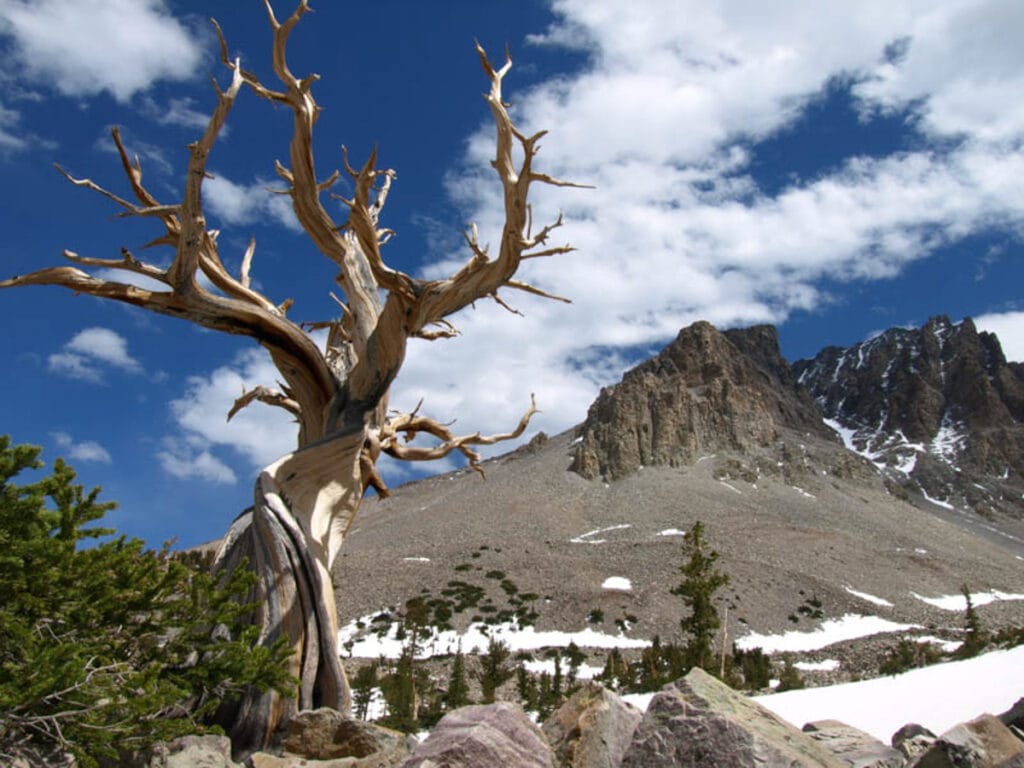
There is a lot to explore in Great Basin, and the Lehman Caves should be at the top of the list. These caves were formed by water running through the limestone, and they are made up of several caverns featuring stalactites and stalagmites.
To access the caves, you must make a reservation (for a small fee) to take a ranger-guided tour.
Another highlight is Wheeler Peak, the tallest mountain in the Snake Range. You can undertake the strenuous hike to the summit or admire the peak from afar and enjoy one of the other awesome hikes in Great Basin National Park instead.
Because Great Basin is so big, you’ll definitely want to spend at least several days here to really see as much as you can, and you can stay at one of five campgrounds in the park.
While you can visit Great Basin year-round, the best time to visit is summer to early fall, when you’ll be able to enjoy ideal weather.
Contributed by Allison from She Dreams of Alpine
26. White Sands National Park, New Mexico
White Sands National Park in New Mexico is one of the best places to visit in the USA.
The national park consists of beautiful white gypsum sand dunes. This is one of the largest gypsum deposits in the world and the sand dunes seem to stretch on for miles in every direction.
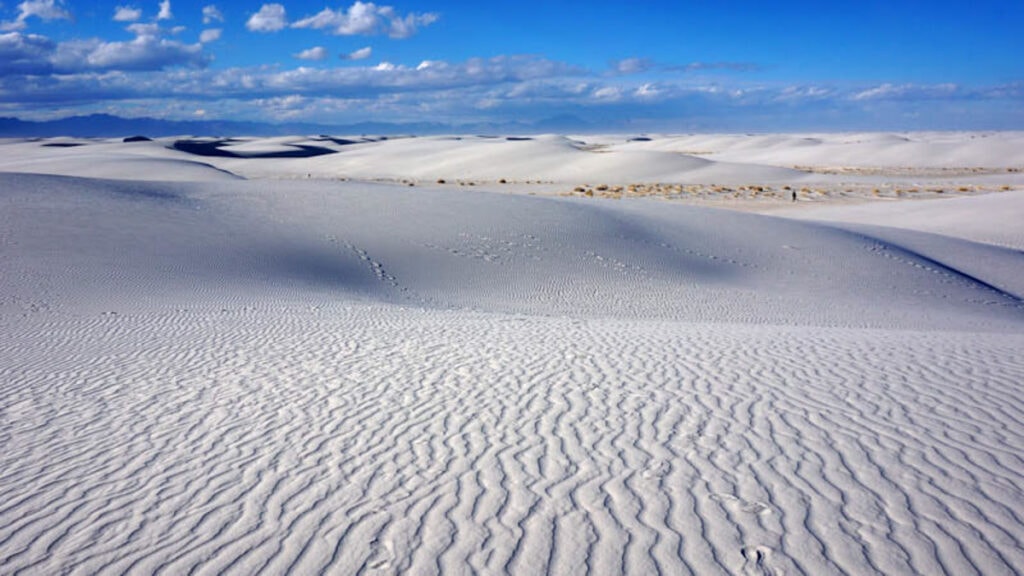
Very few people visit White Sands National Park, because of its location in the middle of the desert. However, you should definitely add this park to your itinerary if you are visiting the area.
There are several things to do inside the national park. There are plenty of boardwalk trails where you can see how the vegetation has adapted to living in the gypsum dunes.
You can also hike over the largest dunes in the park and see the beautiful ripples on the sand. Sunsets and sunrises are especially beautiful at the park.
Another favorite activity in the national park is to drive the scenic dunes drive. You can also rent a sand sled at the visitor center and go sandboarding. This is a fun activity for kids and adults alike.
The gypsum sand dunes stay cool even in the hot afternoon sun, making the park a perfect year-round destination. If you visit in the summer, go early or late in the day!
Contributed by Ketki from Dotted Globe
27. Canyonlands National Park, Utah
Canyonlands National Park has got to be one of the best Western US National Parks!
Located near Moab, Utah, it’s an incredible national park that’s often overshadowed by the nearby Arches National Park. But Canyonlands National Park should be on your USA bucket list because the views are phenomenal!
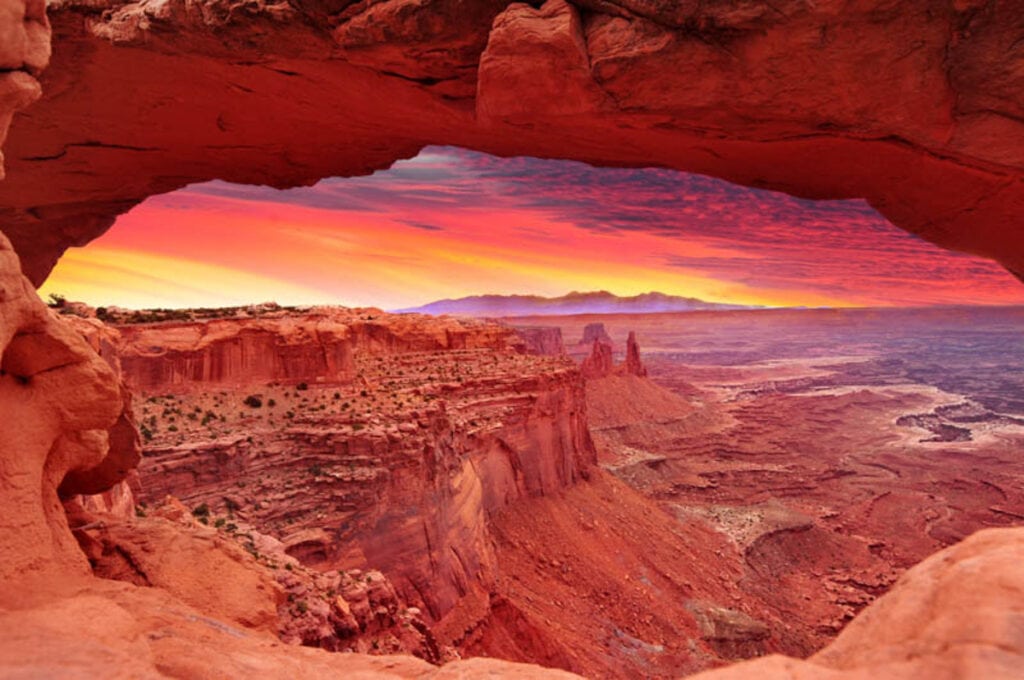
One of the top reasons for going to Canyonlands National Park is the dramatic scenery. It’s like the Grand Canyon meets Arches National Park.
The best way to soak in those views are on foot. Hiking in Canyonlands National Park provides a unique perspective on the park that you just can’t get by driving the park and checking out the scenic stops.
Canyonlands National Park is massive, covering over 330,000 acres.
The most popular and accessible section of the park is Island in the Sky. T
he other sections are more remote and while the hiking and views are amazing, if you have less than a week to explore this park, sticking to Island in the Sky is the way to go.
To explore Canyonlands National Park, you’ll need at least 2 days. That will give you enough time to see the top spots in the Island in the Sky section of the park and get some rest between hikes.
If you seek adventure or love hiking, spending even more time in the park will allow you to do the longer, more intense hikes.
The best time to visit Canyonlands National park is spring, summer or fall. You will experience less snow and ice during your hikes at these times of the year.
Contributed by Nikki from She Saves She Travels
Map of Best Western US National Parks
*****
Which of these West Coast and western US national parks have you visited and which parks are next on your list? Comment below to let us know!
Plus, we’d love to hear about other national parks in the west you love, so we can add them to our list!
MORE INSPIRATION FOR US NATIONAL PARKS TRAVEL
Planning more visits to US national parks?
Plan a national parks road trip from Las Vegas: you’ll find more than a dozen national parks near Vegas to explore, from Utah’s Mighty 5 to the Grand Canyon and Death Valley and Joshua Tree National Park.
If you want national park choices by season, we have an extensive round-up of national parks to visit in the summer, plus national parks to visit in the fall, and US national parks that are perfect for winter visits.
Want to discover the best national parks to visit by month? Check out our national park round-ups by month!
- Best National Parks to Visit in January
- Best National Parks to Visit in February
- Best National Parks to Visit in March
- Best National Parks to Visit in April
- Best National Parks to Visit in May
- Best National Parks to Visit in June
- Best National Parks to Visit in September
- Best National Parks to Visit in October
And if you haven’t yet ordered your US National Parks pass, get it now.
Buy online at REI!
Did you find this article informative? Pin it for later reference!
